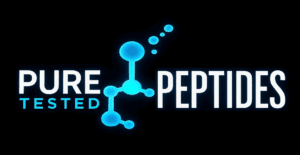Comprehensive Mechanistic Tour: Integrating Endocrine, Matrix, and Mitochondrial Pathways
Research-Only: Informational content for laboratory planning.
Cross-category comparisons assist researchers in selecting molecules by pathway interaction. For instance, pairing GH-axis analogs (cAMP/PKA-centric) with recovery peptides (FAK/paxillin, angiogenesis) enables orthogonal measurement of endocrine and structural cues within the same model system (PMID: 16352683; PMC: PMC8275860). Incretin agonists add metabolic control through GLP-1R signaling and mTORC1-linked hypothalamic nodes (PMID: 17306374; PMC: PMC10691799).
Mitochondrial peptides and cofactors (MOTS-c, SS-31, NAD+) offer a complementary axis: MOTS-c engages AMPK for metabolic stress resistance, while SS-31 stabilizes cardiolipin and improves redox efficiency; NAD+ availability gates sirtuin deacetylation and gene-expression programs (PMID: 25738459; PMID: 32554501; PMC: PMC6206880).
Standardized analytics (HPLC, LC–MS) and COA documentation support reproducibility across categories. Mechanistic mapping—e.g., GH pulse metrics, migration/tube-formation assays, mitochondrial respiration panels—helps align project endpoints with peptide selection. Browse the full catalog.

Methodological Notes. To contextualize mechanistic observations, laboratories typically
report experimental temperature, buffer composition, biological replicates, and blinding/randomization
practices for image analysis and Western quantification. Where possible, orthogonal corroboration is
included: for example, receptor pharmacology by radioligand binding or BRET assays combined with
downstream second messengers; structural endpoints by both live-cell imaging and fixed immunostaining;
and bioenergetics readouts by oxygen consumption/ECAR coupled to targeted metabolomics. These practices
increase reproducibility and allow meaningful comparison across peptide classes and batches in research-only
settings (PMC: PMC7350483).
Statistics & Reporting. Typical analyses include power calculations, pre-registered endpoints,
and multiple-comparisons adjustments for families of tests. Effect-size reporting (Cohen’s d or Hedges’ g),
confidence intervals, and transparent outlier policies enable precise interpretation of receptor- or
mitochondria-targeted peptide experiments. Collectively, these design elements improve the signal-to-noise
ratio in bench studies and inform subsequent assay selection. Browse the full catalog.
